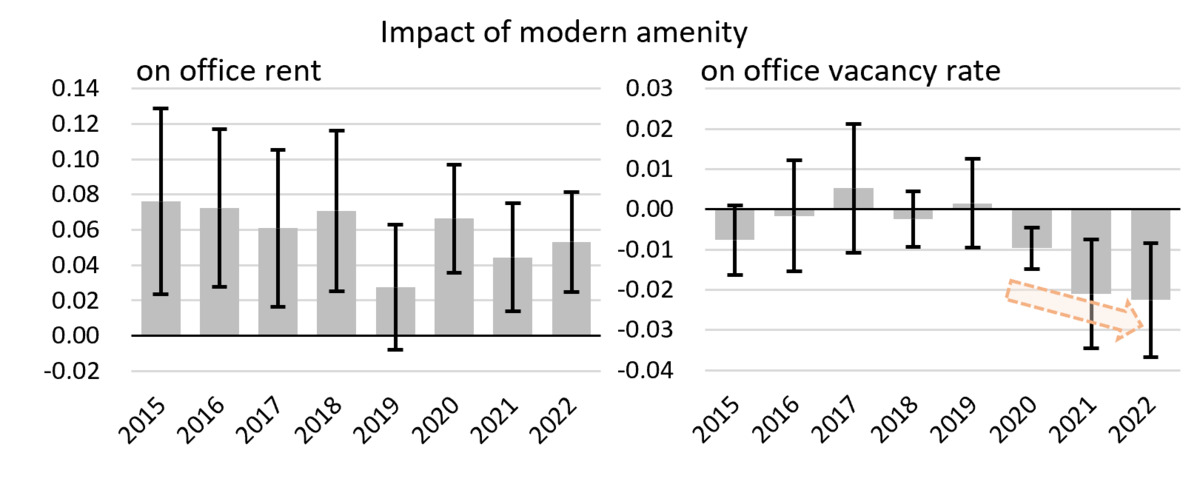Current issue
Online first
Archive
About the Journal
Aims and scope
Editorial Board
International Editorial Board
List of Reviewers
Abstracting and indexing
Ethical standards and procedures
REMV in Social Media
Contact
Instructions for Authors
Instructions for Authors
Manuscript formatting template
Title page
Highlights
Payments
‘Ghostwriting’ and ‘Guestauthorship’
Guidelines for Referees
The impact of the flight to quality on office rents and vacancy rates in Tokyo
1
Graduate School of Systems and Information Engineering, University of Tsukuba, Japan
2
Sanko Estate Co., Ltd.
Submission date: 2023-12-07
Final revision date: 2024-03-27
Acceptance date: 2024-04-24
Publication date: 2024-09-10
Corresponding author
REMV; 2024;32(3):77-86
HIGHLIGHTS
- "flight-to-quality" phenomenon threatens to polarize the office real estate market
- in the flight to quality, companies prefer office buildings with "modern amenities" for their employees
- buildings with modern amenities command higher rents and lower vacancy rates
- significance of these amenities diminishes for properties less competitive in age, size, and location
KEYWORDS
TOPICS
ABSTRACT
With the rapid spread of telecommuting since the COVID-19 pandemic, companies have been relocating to high-end business centers, thereby enhancing the workplace experience for employees, a phenomenon called the "flight to quality." However, this trend’s impact on rents and vacancy rates in individual office buildings has not been extensively studied. To determine the effects of the flight-to-quality phenomenon on individual buildings, we examine the impact of modern amenities, which directly influence employee lifestyles, on rents and vacancy rates in the Tokyo office market. Using a propensity score-based quasi-experimental method, we find that commercial properties with such modern amenities command higher rents and experience lower vacancy rates than those without. The difference in vacancy rates has increased since 2020. However, the significance of these amenities diminishes for properties less competitive in age, size, and location. The results indicate that the "flight to quality" may further polarize the office real estate market into two categories: one for high-end buildings experiencing increasing demand, and another for those with modest amenities experiencing decreasing demand. The findings have implications for office building owners/investors and the government, make educated decisions as to whether to invest in modern amenities, join the quality competition, or encourage urban restructuring.
We process personal data collected when visiting the website. The function of obtaining information about users and their behavior is carried out by voluntarily entered information in forms and saving cookies in end devices. Data, including cookies, are used to provide services, improve the user experience and to analyze the traffic in accordance with the Privacy policy. Data are also collected and processed by Google Analytics tool (more).
You can change cookies settings in your browser. Restricted use of cookies in the browser configuration may affect some functionalities of the website.
You can change cookies settings in your browser. Restricted use of cookies in the browser configuration may affect some functionalities of the website.



